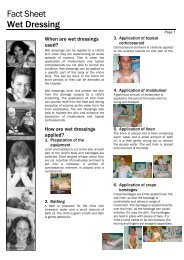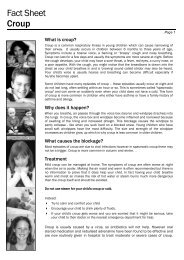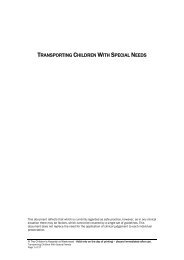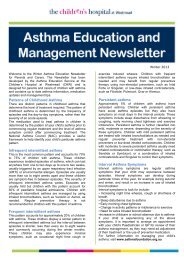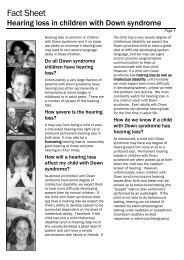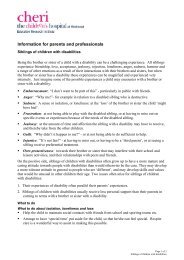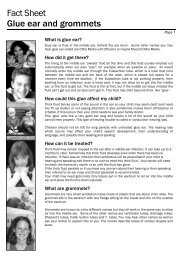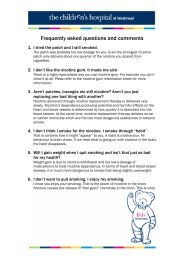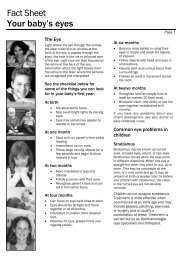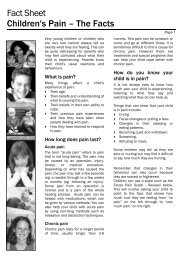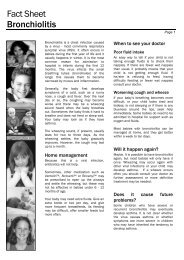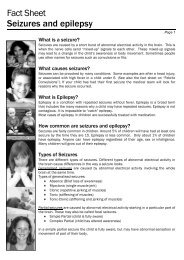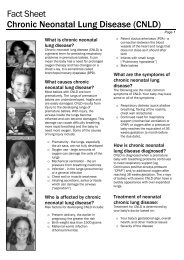Fact Sheet Poisonous Or Harmful Plants - Kids Health @ CHW
Fact Sheet Poisonous Or Harmful Plants - Kids Health @ CHW
Fact Sheet Poisonous Or Harmful Plants - Kids Health @ CHW
Create successful ePaper yourself
Turn your PDF publications into a flip-book with our unique Google optimized e-Paper software.
<strong>Fact</strong> <strong>Sheet</strong><br />
<strong>Poisonous</strong> or harmful plants<br />
xcvxcvxcv<br />
Page 2<br />
<strong>Plants</strong> to watch out for<br />
To help you find your way through the lists of poisonous garden plants we’ve assessed<br />
their likely risk. Many plants have poisonous bulbs or roots but as these are usually<br />
safely underground, they are not likely to poison anyone.<br />
Others taste so awful that it is difficult to eat enough to cause a serious injury. Oleander,<br />
for example tastes so bitter and unpalatable that it is difficult to accidentally eat very<br />
many of the leaves.<br />
On the other hand there are plants that look appealing but contact can have bad results.<br />
See the list on plants to avoid.<br />
Categories of poisonous or dangerous plants<br />
1. Danger! Don’t plant.<br />
2. Avoid these plants if you have children.<br />
3. <strong>Poisonous</strong>, treat with caution.<br />
4. <strong>Poisonous</strong>, but not usually a concern.<br />
1. Danger! Don’t plant.<br />
These are highly poisonous or allergic plants, which shouldn’t be included in gardens.<br />
Asthma or stick weed ( Parietaria judaica)<br />
Although a weed, this plant may be associated with<br />
asthma attacks and can also cause skin allergies.<br />
Remove it from your garden and surroundings. It<br />
can be a weed of wastelands and footpaths<br />
particularly around Sydney and coastal NSW.<br />
Yellow oleander (Thevetia peruviana)<br />
Rhus (Toxicodendron succedaneum)<br />
Most people are very allergic to all parts of this<br />
plant. It is classified as weed in most areas.<br />
Don’t plant it or allow self sown plants to grow.<br />
Remove existing plants with care. Cover your<br />
hands and body to avoid contact. If you have<br />
an allergic reaction, don’t touch the tree againget<br />
someone else to remove it.<br />
All parts of this plant are toxic. Seeds are very poisonous but also highly appealing,<br />
especially, to kids, often called lucky nuts. <strong>Plants</strong> are evergreen with yellow tubular<br />
flowers. Mainly found in warm climates or coastal gardens. Yellow oleander is different to<br />
the oleander commonly found in Sydney, Australia. See the “<strong>Poisonous</strong>, treat with<br />
caution” section of this fact sheet for information on Oleander (Nerium Oleander).



